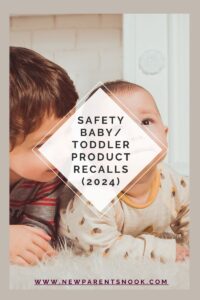Some links on our blog are affiliate links, meaning at no extra cost to you, we may earn a commission if you purchase through them. We participate in the Amazon Affiliate Program, and we recommend products we believe in. Your support helps us keep providing valuable content. Thank you!
FAQs and Tips for Formula Feeding: Your Comprehensive Guide
Navigating the world of formula feeding can be filled with questions and challenges, especially for new parents.
Here, we address some of the most common FAQs about formula feeding, along with practical tips and advice to make your experience as smooth as possible.
Frequently Asked Questions
Q: How do I choose the right formula for my baby?
A: Start with a standard iron-fortified cow’s milk formula, which is suitable for most infants. If your baby has specific needs, such as allergies or sensitivity, consider specialized formulas and consult with your pediatrician.
Q: Can I switch formulas if my baby doesn’t seem to like the one we’re using?
A: Yes, you can switch formulas, but it’s best to do it gradually by mixing the old and new formulas over several days. Monitor your baby for any signs of discomfort or allergy, and consult with your pediatrician if you’re unsure.
Q: How much formula should my baby be drinking?
A: The amount varies by age and weight. Newborns typically start with 1-2 ounces every 2-3 hours, increasing as they grow. By 6 months, most babies consume 6-8 ounces per feeding, 4-5 times a day. Always follow your baby’s hunger cues.
Q: How can I prevent gas and discomfort in my formula-fed baby?
A: Burp your baby frequently during feedings, use a slow-flow nipple, and consider formulas designed for sensitive stomachs if gas is a persistent issue. Keeping your baby upright during and after feedings can also help.
Tips for Successful Formula Feeding
1. Maintain Hygiene: Always wash your hands before preparing formula and ensure all feeding equipment is sterilized and clean.
2. Water Safety: Use safe water sources for mixing formula. If you’re concerned about water quality, boil the water for one minute and cool it to the recommended temperature before mixing.
3. Warm Wisely: If your baby prefers warm formula, heat the bottle in a bowl of warm water or a bottle warmer. Never use a microwave, as it can create hot spots.
4. On-the-Go Feeding: For convenience when out, consider using a portable bottle warmer or pre-measured formula dispensers. Ready-to-feed formula is also a hassle-free option, though more expensive.
5. Night Feeds: Prepare everything you need for night-time feedings before bed. Keep pre-measured water in bottles and formula in a dispenser to make feeding quick and easy during the night.
6. Monitor Your Baby’s Response: Pay attention to how your baby reacts to the formula and feeding schedule. Signs of satisfaction, regular bowel movements, and steady weight gain are good indicators that your feeding routine is working.
7. Seek Support: Don’t hesitate to reach out to healthcare providers or lactation consultants with questions or concerns about formula feeding. Parenting groups, both online and in-person, can also be great resources for support and advice.
Conclusion
Formula feeding is a valid and nutritious option that can meet your baby’s dietary needs.
By staying informed, prepared, and attentive to your baby’s cues, you can navigate formula feeding with confidence.
Remember, every baby is different, so what works for one may not work for another. Trust yourself, and know that you are doing an excellent job providing for your baby.







